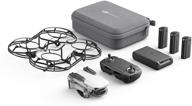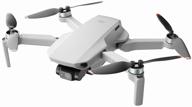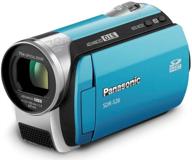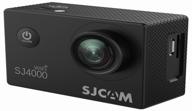
Review on Sony Cyber-shot DSC-RX100 II camera, black by Jnis Zels ᠌

Valuable purchase, nothing but pluses!
* the camera is available at the Sony training and support studio, you can try it in action and compare it with other models (you need to bring your own memory card and tripod (and batteries if you need to test an external flash)). In general, the presence of such a studio is a serious advantage for Sony (if only Canon / Nikon had such a showroom where you can test the equipment yourself . ) * some advantages/disadvantages were found when compared with NEX-6. I chose, in fact, between the RX100, RX100M2 and NEX-6. I settled on the RX100M2, because in the future I am going to purchase an external flash HVL-F20M * camera turn-on speed - about 2.5-3 s until the first shot, comparable to the turn-on speed of the NEX-6 + SEL-16F28 (the NEX has a rather tight trigger lever) * the built-in flash, although it is directed at the ceiling, is too low-power and is suitable in this mode (for reflection) only as an auxiliary light source * IMPORTANT! A camera can never replace a DSLR. It is better to learn photography with an amateur SLR camera. The ergonomics of _any_ entry-level Canon/Nikon/Sony/. DSLR is much better than the RX100 or NEX (even 6 and 7). The RX100M2 is, first of all, a good _second_ or _third_ camera for a photographer, which you can always carry with you and get good quality pictures. * if you just need a very good compact (without a hot shoe, swivel screen and Wi-Fi + NFC), you can stop at RX100, in terms of image quality it is comparable to RX100M2, and the price is lower and will decrease
- +comvers almost all everyday photo needs + image noise is much lower than oncommpact cameras and slightly higher than on (non-)DSLRs.Compared to the NEX-6, when shooting in JPEG the same scene with the same aperture value, almost the same image quality is achieved up to ISO 800-1600. Can shoot indoors without a flash at reasonable shutter speeds (~1/60 s) at ISO 1600-3200 + significantly smaller and lighter than any NEX, especially given the size of a similar lens + there is a hot shoe of a standard design, which makes it easy tocomnnect external non-automatic flashes, even studio monoblocks, if necessary (but hardly anyone will do this) + can be charged from any USB port with a standard microUSB cable.Conveniently, I carry one cable with me to charge my phone and stereo headset, now also for the camera. But there is a minus here (see disadvantages) + great bright flip screen that makes it easy to shoot (almost) discreetly from the hip without lifting the camera + excellent image stabilizer + electronic level + impressive video quality +comnvenient cameracomntrol, morecomnvenient than even the NEX-6 (my subjective opinion). At first I didn’t like the lack of a separate button for setting the ISO, then I read about the Fn function button, which can be programmed for various functions (ISO, white balance) + acceptable level of distortion introduced by the lens - see quick test - + high resolution of the matrix, images can be cropped / resized + gives the impression of a quality product, but does not look defiant (like a Large Black SLR with a Large White Lens) + you can use your smartphone as a remotecomntrol with an external screen
- - there is no charger in the kit, and charging the battery via the USB cable takes a long time (according to the instructions, 230 min = 3 h 50 min). The absence of the obviously necessary memory in the kit is unacceptable for goods of such a high class - in the reviews it was written about the delicate glass of the display, I agree, here the manufacturer _could_ do as in the case of Xperia smartphones, namely, stick a protective film at the factory (but did not) - due to the size of the sensor (smaller than APS-C), the aperture settings for setting a certain depth of field will differ from those in (without-) SLRs, you will need to get used to this - but the depth of field, as a rule, is large. Small is achievable when shooting small subjects at the wide-angle zoom position from close range. "Like a macro" at the same time turns out well, but lovers of good bokeh will not be impressed by the blurring of the background of the RX100M2 - when recording a video with sound, the sound of the motor is recorded when using the zoom, so it's better to use the "foot zoom" - not very comfortable front ring (rotation is too smooth) (my subjective opinion) - thin battery cover that can fall off if dropped - there is no separate viewing mode on the mode ring (without opening the lens). It is solved by _turning on_ the camera with the Play button, however, if Play (or, for example, Fn) is accidentally pressed while viewing, the lens extends - lack of grip (fixed by a case on the belt, in which it is more convenient to hold the camera, in addition, you can shoot from the hip by turning the screen up) - lack of GPS, most likely, this will be "fixed" by the release of an expensive external module on the shoe, less likely - the ability to transfer coordinates from a smartphone - few (almost none) settings for remote control via Wi-Fi (only mode - photo / video, zoom, flash - off / auto)












